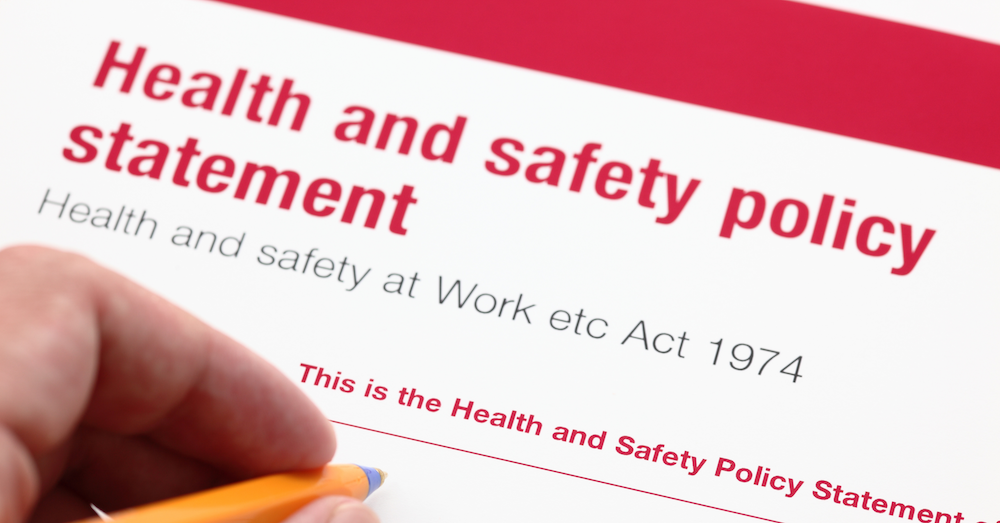Work Health and Safety in New Zealand
Modern health and safety legislation dates back to the UK’s Factory Act of 1802 which set down rules on critical safety issues such as ventilation, cleaning and working hours. While working conditions for many continued to be extremely harsh, growing awareness of health and safety issues led over the years to the Health and Safety Act 1974. The Act remains the cornerstone of worker safety legislation in the UK, and has had a major influence on rules and laws in New Zealand.

- Article navigation
The Health and Safety at Work Act 2015
“The main purpose of HSWA is to provide a balanced framework to secure the health and safety of workers and workplaces. A guiding principle of HSWA is that workers and other persons should be given the highest level of protection against harm to their health, safety, and welfare from work risks as is reasonably practicable”.
What are the requirements of The Health and Safety at Work Act?
New Zealand’s Health and Safety at Work Act follows on from the guiding principles of the UK legislation, which has formed the basis of health and safety law throughout the world.
The basic tenets of worker safety legislation are that:
- risks to health and safety are controlled
- workers should not get hurt or ill at work
- responsibility falls on employers and employees
The main steps which employers need to follow are to:
- decide how workers could be harmed
- work out precautions to avoid harm
- explain how risks are controlled and who is responsible
- consult with workers and representatives
- provide health and safety training, sanitation and first-aid
- report dangerous incidents
- provide insurance for workers
There are also obligations for employees to:
- adhere to the training
- take care of yourself and others
- cooperate with employers on health and safety
- report if you think anyone is at risk
Are risk assessments part of health and safety?
Understanding risks and the dangers which workers are exposed to is a key responsibility for all employers. The approach for doing so falls under the heading of risk assessments covering in detail:
- who could be harmed and how
- controlling risk
- further actions needed, who will take them and when will they be done
Risk assessment examples and templates can be found on the HSE website, and includes specific guidance for offices, shops, food, car workshops, factories and warehouses.
For lone workers, it is important for employers to identify exactly who they are. Even if they work close to other people they may still be working alone, and need to be covered by the organisations’ lone working policy. We provide further details on lone worker policies in our Guide to Lone Working.
You can also see our blog on dynamic risk assessments for lone workers. Lone worker risk assessments need to take account travel and work locations, interaction with other people and the availability of support. While risk assessments take place before work is undertaken, dynamic risk assessments also take current situations into account and events as they unfold. For a fuller picture, see our guide to Lone Worker Risk Assessment.
Why is training so important for health and safety?
Training is an integral part of the Health and Safety Act for all staff, including lone workers. Training needs to be tailored to address specific risks in different job roles, such as working at heights, night working and dealing alone with clients and members of the public.
To enhance health and safety at their place of work, employers can provide lone worker training which leads to accredited health and safety qualifications. The certificate from IOSH, the Institute of Occupational Safety and Health is globally recognised. Without the right training, employers run the risk of falling foul of health and safety legislation.
Training needs to cover the identification of training needs, training methods and implementation. Find out more in our blog on implementing effective health and safety training.
Why is reporting a key part of health and safety?
Thorough reporting is a vital part of effective health and safety management. Without a properly documented record of incidents, it is impossible to know with any accuracy about events in the past. Equally importantly, employers need a record of the steps taken to avoid the recurrence of accidents or other causes of injury.
Reporting can also identify trends which need to be addressed to manage health of safety properly. For example, a recent survey of health workers showed an increase in cases of harassment and abuse. A clear record of the incidents provided an explanation for increased stress in health care roles which resulted in increased absence. Management were left with decisions to make about key issues such as staff resources and solo night shifts.
The quality of reporting also reflects the success of embedding a thorough approach to health and safety across an entire organisation. The proportion of staff who are prepared to report hazards and incidents is cited as being as low as 1-in-6. To address this problem, organisations need to develop a culture which positively embraces health and safety. It is in the interests of employers and staff alike to do so.
How can lone worker apps improve health and safety?
Advances in technology provide a very significant aid to the way health and safety concerns for lone workers are handled. The StaySafe app is an invaluable tool for large corporations and smaller businesses, allowing lone workers to communicate and be monitored while they are at work. The app runs on mobile phones, and can be set up with support from an external hub or the organisation’s own centre of operations. It can also be configured with a simple Bluetooth connection for a single touch panic button, and can be used with satellite technology in remote locations without network coverage.
For a fuller picture of the StaySafe app in action, see our case studies from organisations using our lone worker app, in sectors including property, telecomms, forestry, local government, retail and many other working environments.
To see how StaySafe can help you protect your lone workers, 24/7, wherever they are, book your free demo today.
Are you protecting your lone workers?

Richard BedworthSales Director, StaySafe
Richard is a lone worker safety expert. He understands the lone worker market and the common challenges customers face.
Before moving into the lone worker arena, Richard started out in the security industry working for Securitas and G4S risk profiling. Outside of work, Richard enjoys travelling with his family, running and competing in triathlons.
Explore our range of lone worker solutions
See StaySafe in action
- 2 week free trial
- See how employees can use the app to check-in & send alerts
- See realtime updates in the monitoring hub
Guide to Lone Working
A comprehensive lone worker guide for employers, managers and the self employed.
Lone Worker Risk Assessment
Three Questions to Ask When Purchasing a Lone Working Solution
Find out more about StaySafe solutions

Lone Worker App
Our intuitive app allows employees to check in safely following a lone working session and raise an alert in an emergency.

Cloud Based Monitoring Hub

Wearable Technology










